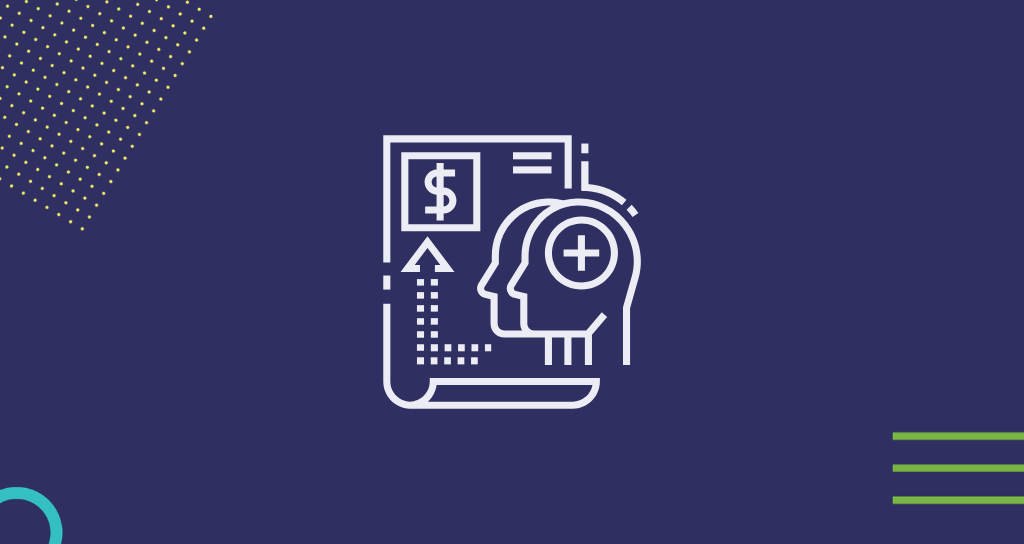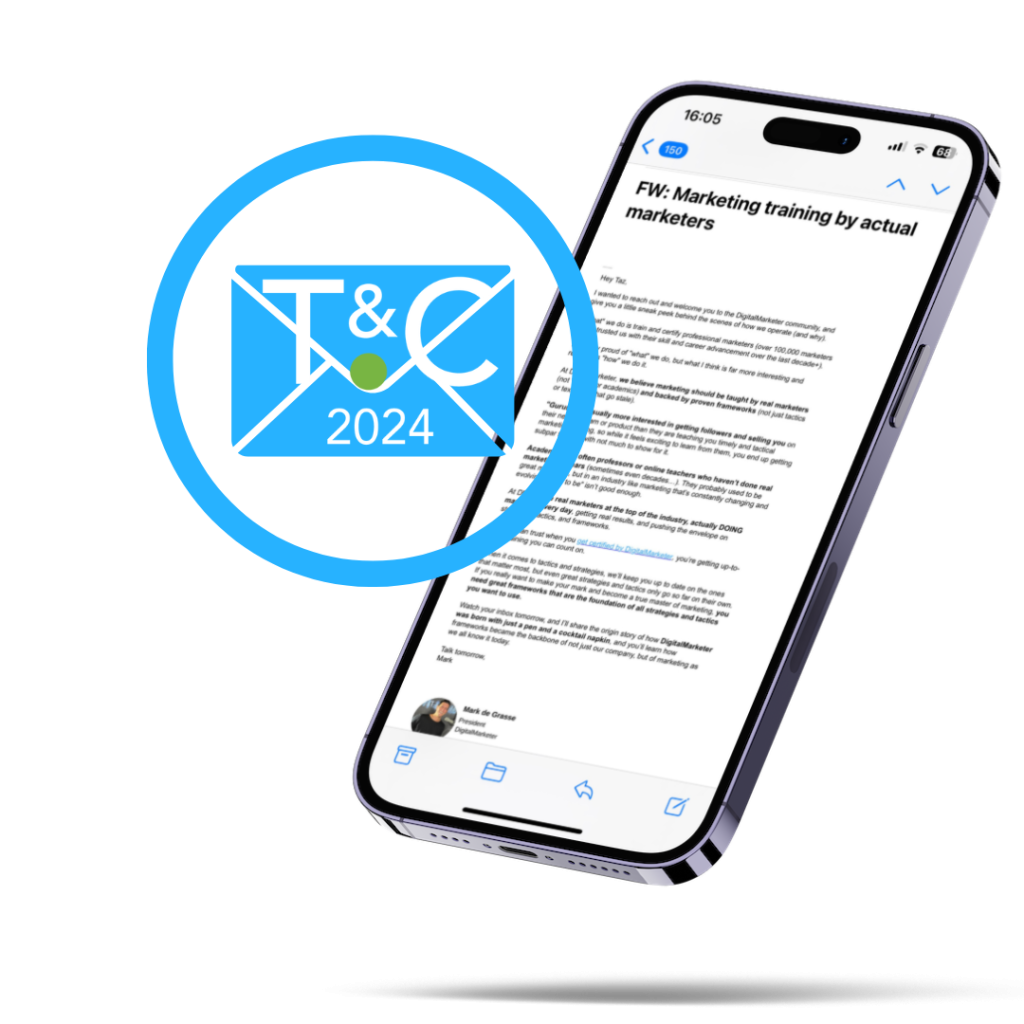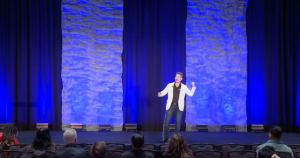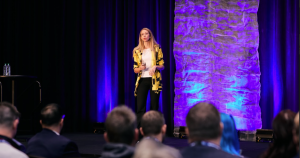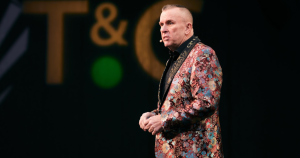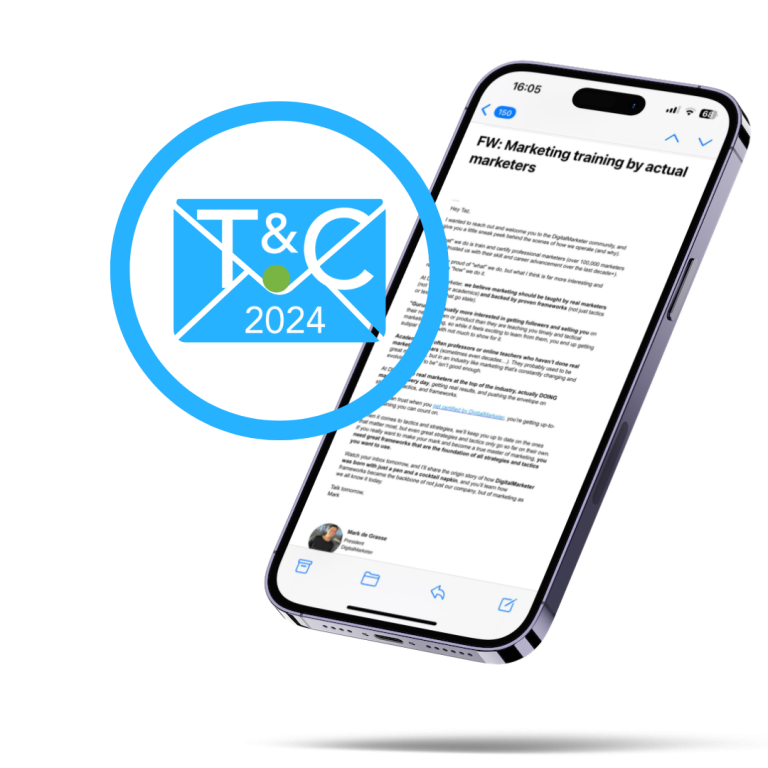With so many channels vying for attention, leads and conversions aren’t a matter of thinking about what’s changing right now. They’re a matter of realizing what isn’t going to change in the next ten years.
The twenty-million-dollar inbound sales playbook is seven evergreen sales and marketing plays that won’t change in the next ten years.
Play One: Use the Right Message, the Right Market, and the Right Media
What’s the right message if it is showed to the wrong audience?
Andy Mackensen’s company, SnackNation, delivers healthy snacks all over the country. Their message of healthy, convenient snacks is delivered to office managers, executive assistants and people with HR titles. Ads are placed on LinkedIn and targeted directly to these professionals online.
These ads purposely place a curiosity element into their headlines, such as “One simple office snack secret that secretaries…”. Using the job title in the headline, followed by clicking to a congruent landing page that answers the “one simple office snack secret.” On this landing page is an irresistible offer, like a free snack box, that motivates the viewer to input their contact information.
Play Two: Make Your Moat with a Multi-Step, Multi-Channel Marketing Sequence
A moat is created as a competitive advantage that makes it much more difficult for a competitor to copy a product and brings value to the business. In marketing, this moat looks like this:
The warm up has no purpose in attempting to get leads, it’s there to get people acquainted with the business. On day zero, the first day of the campaign, a postcard gets mailed with contact information for the consumer to reach out to the brand. By day five, the postcard has been sent and multi-day calls and emails are launched. The postcard can be seen below in Play Four: Building Trust. During these multi-day calls and emails, retargeting on Facebook and LinkedIn is in full effect. On day thirty, the offer comes out.
Using a multi-step marketing sequence placed across multiple channels makes it extremely difficult for competitors to replicate what a business is doing.
Play Three: Build Trust
Building trust automatically levels up a business and the product or service they are offering. There are three major trust builders:
Testimonials are one of the major influencers of creating trust between consumer and brand. SnackNation uses their customer advocacy platform to motivate customers to leave reviews. If they complete a two-line testimonial or record a short video, they receive points to be used for gift cards and other rewards. There is no such thing as too many testimonials and the infinite scroll on the testimonials page builds trust and authority.
Starting a podcast builds trust and creates authority. For example, SnackNation has a podcast called Brand Builder podcast. They help emerging snack brands build their brand through the information in the podcast. New podcasts can find industry leaders to partner with. In return for the partner promoting the podcast they get a return on the podcast’s profits.
Private Facebook groups create a community for a targeted audience. SnackNation created a private Facebook group for office managers, executive assistants and human resource leaders. For each avatar, they have a separate Facebook group. Inside of the groups, organic conversations between members help SnackNation choose the best snacks and implement successful ad campaigns that speak directly to their consumer.
Play Four: Drive Targeted Traffic
YouTube advertising, Facebook advertising, and AdWords are well known for increasing traffic.
How can you 10x content marketing without them?
SEO marketing is not as hard as it has come to be known for. The key to a successful SEO strategy, without the use of AdWords, is to find the keywords that directly relate to the product, create the best content on page one of Google for it, link-build and implement promotion back to that article and it will rank. For SnackNation, their target keyword was “office snacks.” If the content is converting, increase the amount of real estate by using AdWords to promote a pay-per-click ad.
Email co-marketing removes the search and places the content directly in front of the avatar. Find the avatar groups who have big email lists and then offer to pay for an advertisement spot. Another option is to swap advertisements, where each company promotes the other with no money exchanged. This strategy not only drives traffic but helps identify the avatar with the highest affinity for the product, producing the most revenue at the lowest cost. For example, email co-marketing showed SnackNation that their lowest cost, highest paying avatar were catering companies that catered too offices.
For the businesses with a high return of interest on email co-marketing, direct mail is the next step. Each business sends a physical postcard to the others mailing list, continuing to grow each of their audiences with high quality leads. The first postcard looks like this:
Using a company that personalizes the postcards, the prospect’s LinkedIn or Facebook headshot is printed on the postcard as well as their first name, last name and the name of their company. SnackNation has seen a major impact from these postcards, with a 4% response rate and 2.5% marketing qualified leads (MQL). Each postcard has an irresistible offer for a free snack box. The prospect has to go to the SnackNation landing page and input their discount code.
Thirty days after the first postcard is sent, the second postcard is delivered with another offer. SnackNation coupled the second postcard with a $200 Amazon gift card for anybody who purchased. Typically, there is a lower response rate on mailer two, but with the offer the response rate of 4% was maintained.
Reverse webinars system generates leads prior to the start of a free webinar. SnackNation generates 80% of leads with a 42-page PDF called, “State of the Office Manager Report” that is then turned into a webinar called “The Five Surprising Secrets of Successful Office Managers.” After opting in for the webinar, instead of a thank you page, viewers see the snack offer. The goal of the webinar is to get prospects to sign up for the free snack box. The $200 Amazon gift card offer is utilized and the private Facebook community is promoted.
Play Five: Consistent Conversion Rate Optimization
Split testing is a conversion rates best friend. Examples of this optimization are in SnackNation’s offer sign up form. There are eight total input fields to fill out for the offer but only five fields appear. The last three pop down after the user inputs their job title. This makes the form initially look shorter and creates micro-commitments, helping to boost conversions on forms.
Play Six: Measure Like a Mofo
Not all leads are created equal and so they shouldn’t be treated equally. Data analysis on the opt-in information that creates the highest revenue per lead is essential. Send the best leads, measured as the highest revenue per lead, to the best representatives. The worst leads, measured by the lowest revenue per lead, are sent down a self-serve funnel. For SnackNation, the best lead has a high number of employees and a high snack spend.
Using 15,000 leads, SnackNation analyzed the traits and responses in the lead form that were showing the most revenue. Each lead was ranked and the bottom leads were generating little to no profit. The traits and responses of these leads were also analyzed.
Measure and compare leads to create the most optimized forms.
Play Seven: Deploy Speed and Persistence
Leads decay quickly. Contact to a lead after one minute has a 391% conversion rate. After 24 hours, it is down to 17%. Persistence matters. SnackNation has a service-level agreement with reps where the representatives must call the worst leads at least four times. The best leads have to be called at least six times, but the recommendation is eight. On the sixth call, there is a 90% conversion rate. After opting in, there is a “chat now” option to talk to a representative immediately.
This is the distraction economy. Businesses that stand out are the ones focusing energy on the marketing principles that won’t change in the next ten years. They are the leaders of their niche.
Follow the seven evergreen marketing plays and win in the market.
And if you’re ready for more…
Traffic & Conversion Summit 2020 is happening December 15 – 17 in San Diego. In 3 content-packed days, you’re not only going to get expert sessions from Ryan Deiss but also marketing legends like Marcus Lemonis, Roland Frasier, Billy Gene Shaw, Ezra Firestone, Mari Smith, Rachel Bell, Kevin Harrington, Kristen Bryant, Richard Lindner, Goldie Chan, Chalene Johnson and many more. Find out more here >>

